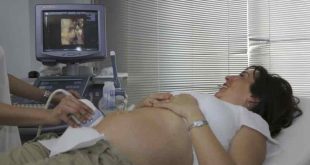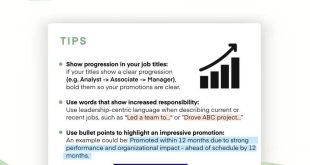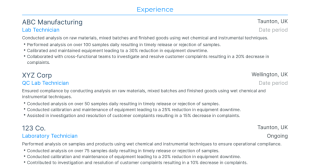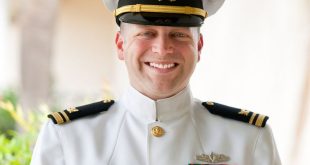Can Fighter Pilots Wear Glasses – It’s right in the name: “Aviator”. The classic order has always been associated with flight and aviation. Sunglasses are still popular with pilots around the world, 70 years after they first appeared on military pilots.
Why is flight still seen as the dominant genre? See the first plan. Aviators were originally designed to give military pilots the best possible coverage for their eyes in the sky. Both the teardrop shape and the more rectangular aviator shape have larger lenses that provide full coverage of the eye socket for pilots. Additionally, the lens system is closer to the face, so the viewfinder can be easily raised or lowered. Bayonet mounts were also installed so that the pilot could take his goggles on and off without removing his helmet or headset. While the original aviators typically came with tinted green or AGX lenses, the Federal Aviation Administration (FAA) now recommends gray lenses, as they allow for the most natural colors. All these elements have made aviators preferred by both amateur and professional pilots.
Can Fighter Pilots Wear Glasses
Randolph has roots in aviation and provides sunglasses to pilots. One of us, Jan Waszkiewicz, was a navigator in the Royal British Air Force in World War II. Shortly after, he moved to America and began making mechanical devices to improve sunglasses. In 1982, when Randolph Engineering had only been in business for ten years, the United States Air Force contracted Randolph to manufacture the HGU-4/P sunglasses as part of the standard issue uniform. To this day Randolph continues to produce the HGU-4/P for the US Army, Navy and Air Force around the world. The answer is in the name. “Aviators” were military pilots to give the best coverage for eyes in the sky. They have large teardrop-shaped and rectangular-shaped lenses that provide full coverage of the pilot’s eye base.
History Of Aviator Sunglasses
Aviators have been sold commercially since the late 1900s as Randolph Aviators, manufactured by Randolph Engineering, Incorporated.
And this design allows the viewfinder to be easily raised or lowered as the lens is closer to the face. Bayonet mounts were also installed so that the pilot could take his goggles on and off without removing his helmet or headset.
This design is capable of a very wide range of lenses with a myriad of refractive power, especially with the introduction of high refractive index lenses, and it does so in a configuration that allows direct vision throughout the full field of vision, and also allows the viewer to clean the aviator’s glasses with certainty when the flight helmet is worn.
While the original aviators typically came with tinted green or AGX lenses, the Federal Aviation Administration (FAA) now recommends gray lenses as they allow for the most natural colors. All these elements have made aviators the choice of both amateur and professional pilots.
Incentive Flights: Recognizing Deserving Airmen > Spangdahlem Air Base > Article Display
There is also an old tradition that makes pilots the first choice of aviators. The first aviator style sunglasses were made by American Optical in 1935 and were the US Army Air Corps D-1 sunglasses. Because there was no respect for the choice of pilot glasses. Aviator sunglasses became ingrained in American culture when Douglas MacArthur was photographed wearing them while on duty in World War II.
Aviators are too cheerful. The face fits the figure best and is also recognized almost immediately. The appearance also makes him different.
Aviators are primarily associated with pilots. The scientific backing is easily understood as to why most pilots choose these sunglasses. The tradition of these glasses as well as the comfort and style is almost impossible to replace them as the first choice of sunglasses for military and commercial pilots.
To crack SSB Interview, you can join our SSB Interview Live Classes and we recommend you to enroll for SSB Interview Online course. The tribune was entrusted with the protection of aspirants. Pilots must have excellent vision to perform their duties safely. Therefore, a military pilot is required to have vision before taking the pilot position.
Can Air Force And Military Pilots Wear Glasses?
Moreover, in a short time, because the eyes are adapted to low visibility, therefore, for the health of the eyes, the cause of health must be as good as possible.
The Navy conducts tests for all recruits, and even the eye requirements are tougher for those seeking to become Navy pilots.
An eye doctor considers field of vision, color vision, distance visual acuity, near visual acuity, and depth perception.
While good vision is a priority, you can still become a Navy pilot if you wear glasses or contact lenses.
Video: Navy Pilots Flying Dozens Of Daily Russian Deterrence Missions From Uss Harry S. Truman
In addition, if distance vision is 20/100 incorrect or worse, pilots must carry an additional pair of glasses.
With regard to vision, if the incorrect vision is worse than 20/40, pilots must have a correct way of vision with glasses or contacts.
It is a common sight to degenerate over the years; So if the vision can be corrected to 20/20, the vision in each eye will deteriorate to 20/00.
Also, to meet military pilot vision requirements, many pilots or aspiring pilots undergo LASIK surgery to correct their vision, which is allowed.
Woman Flies Fighter Plane Through Japan Air Force’s Glass Ceiling
Pilots say contact lenses cause dry eyes and wearing glasses in flight is a hassle and LASIK is an option that addresses those problems.
All pilots must have color vision, and there is no exemption for pilots without color vision.
To exercise pilot eligibility, a candidate’s vision must be 20/70 or better in both eyes, and correctable vision must be 20/20.
To attend a Navigator appointment you must also have vision of 20/200 or better, which must be corrected to 20/20 vision.
What Is A Fighter Pilot?
Furthermore, the difference between the pilot and the navigator is that the pilot flies while the crew steers the pilot safely.
Pilots who have completed flight school may have vision that deteriorates as long as it remains at or below 20/400 and the vision is correctable.
Fortunately, pilots and sailors can now have LASIK treatments to correct vision and still be eligible for their jobs if they don’t want to wear contacts or glasses.
Finally, medical vision standards allow for astigmatism up to 1.50D. However, a discount of up to 3.00 D is available for pilots.
Vision And Aviation: Consider Lasik For Pilots And Astronauts
Army pilots must have a distance visual acuity equal to or better than 20/50 in both eyes that can be corrected to 20/20.
In addition, astigmatism greater than +/- 1.00 cylindrical diopters in both eyes will not meet the minimum standards of Army military pilot vision requirements.
Military color vision is not as strict as other branches because a potential pilot can have three mistakes in the plate test.
Also, you must score at least 55 on red, blue, and green for the computer version of the color test.
The Enduring Appeal Of Aviator Sunglasses
After training, the Army will not terminate a pilot with poor vision as long as the vision is 20/400 or better.
It’s also worth noting that Army pilots report that acceptance into the Army Aviation School is competitive and part of the screening process.
While both are technically naval aviators, Navy and Marine pilots have different specialties after flight school.
After aviation school, if the vision decreases, it will not be rejected, as long as the vision is 20/100 or better in both eyes and is correctable to 20/20.
Can I Be A Pilot With Glasses?
However, you can have LASIK surgery if you want to correct your vision without the need for contacts or glasses.
Although the perception is that the Coast Guard is a naval branch, it also consists of Coast Guard pilots.
But as long as the vision is 20/40 or better, glasses or contacts can correct the vision to 20/20.
In addition, depth perception is essential, and is permitted if corrective aids are used for correct depth perception.
Vision Requirements For A Military Pilot/navigator
The Coast Guard allows waivers for LASIK surgery as long as the pilot or prospective pilot meets all other vision requirements.
There are many reasons why a military pilot requires vision when dealing with low visibility conditions and blind spots.
Airmen and sailors attend the same aviation school and are held to the same physical standards.
In addition, other military branches, including the Air Force, Army, and Coast Guard, have their own standards and requirements for pilot attire.
Military Pilot Vision Requirements Operation Military Kids
In most cases, exemptions are available to people who can improve their vision to 20/20 by using contacts or glasses.
In addition, LASIK surgery is accepted and many military pilots use laser surgery to correct their vision without the use of contacts or glasses.
Rob- is the founder v. Although he never actually served in the US military, he has an interest in writing about military matters.
Born and raised in Woodbridge, NJ, he graduated from the New Jersey Institute of Technology with an MBA in Ecommerce. His hobbies include beach volleyball, target shooting, and weight lifting.
Mirrored Aviator Sunglasses
Rob is also a rated commercial pilot and a certified flight instructor (CFI) with over 1,500 flight hours.
Can fighter pilots wear glasses? Do you have 20/20 vision to be a pilot in the military? we answer them
Can pilots wear glasses, can lifeguards wear glasses, can pilots have glasses, can military pilots wear glasses, can airline pilots wear glasses, can pilots wear contacts, can pilots wear polarized sunglasses, can commercial pilots wear glasses, do fighter pilots wear diapers, what do fighter pilots wear, why do fighter pilots wear helmets, can dogs wear glasses



